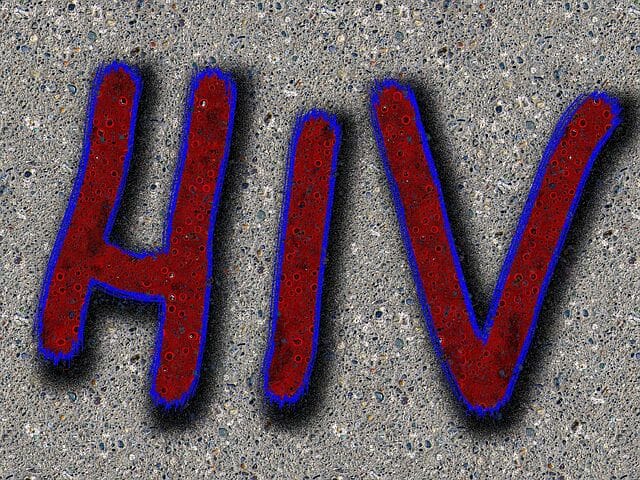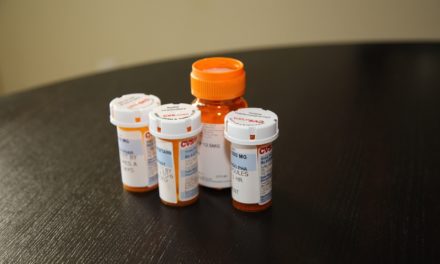The estimated number of people living with HIV/AIDS in Riverside County grew significantly after state health officials changed the way they collect health data, according to a report released by county health officials.
In Riverside County, 5,552 cases were reported for 2016 (using the most recent data available), compared to 8,404 under the new calculations for the same period. The rate per 100,000 residents increased from 236 to 357 during that time. Health officials suspect improved healthcare and the well-established HIV/AIDS care and support infrastructure in the eastern portion of the county might have caused the migration.
The largest increase occurred in the eastern county, which includes Palm Springs and the Coachella Valley.
The 51 percent increase does not mean the frequency of the illness has spiked, the five-page report states. In past years, estimates were based on the location where individuals lived at the time of diagnosis, regardless of where they received treatment. Improved data collection can now better track patients and more accurately reflects where they live, the report states.
Officials estimate that nearly 3,000 more people living with HIV/AIDS have moved into Riverside County than moved away in recent years.
“We’ve always suspected the number of people living with HIV/AIDS was higher than previously reported,” Dr. Cameron Kaiser, public health officer for Riverside County, said. “This data gives us a more accurate picture of what’s happening in Riverside County and the challenges facing patients, medical providers and the systems that serve them.”
To read the full report, click HERE:
Riverside County health officials’ study dovetails a new government report that finds HIV is being diagnosed sooner after being infected than several years ago.
The estimated time it takes to get an HIV diagnosis from time of infection is now three years, according to the study from the Centers for Disease Control and Prevention. In 2011, the median time was three years and seven months.
The seven-month improvement is a considerable decrease over a four-year period and reinforces other recent signs that the nation’s approach to HIV prevention is paying off. Overall, 85 percent of the estimated 1.1 million people living with HIV in 2014 knew their HIV status. CDC estimates about 40 percent of new HIV infections originate from people who don’t know they have HIV.
“These findings are more encouraging signs that the tide continues to turn on our nation’s HIV epidemic,” CDC Director Dr. Brenda Fitzgerald said in a statement. “HIV is being diagnosed more quickly, the number of people who have the virus under control is up, and annual infections are down. So while we celebrate our progress, we pledge to work together to end this epidemic forever.”
Getting an HIV test is the first step to learning how to reduce future risk for people who do not have HIV and to starting treatment and getting the virus under control for people living with HIV. Taking HIV medicine as prescribed allows people with the virus to live a long, healthy life and protect their partners from acquiring HIV.
“If you are at risk for HIV, don’t guess — get a test,” Dr. Jonathan Mermin, director of CDC’s National Center for HIV/AIDS, Viral Hepatitis, STD, and TB Prevention in a statement. “The benefits are clear. Prompt diagnosis is prevention. It is the first step to protecting people living with HIV and their partners.”
CDC recommends testing all people ages 13-64 for HIV at least once in their lifetime, and people at higher risk for HIV at least annually. Healthcare providers may find it beneficial to test some sexually active gay and bisexual men more frequently (e.g., every three to six months).
The Vital Signs analysis found that the percentage of people at increased risk for HIV who reported getting an HIV test the previous year has increased. Despite that progress, too few are tested. A multi-city study found that people who reported that they did not get an HIV test in the last year included 29 percent of gay and bisexual men, 42 percent of people who inject drugs, and 59 percent of heterosexuals at increased risk for HIV. The same study also found that seven in 10 people at high risk who were not tested for HIV in the past year saw a healthcare provider during that time — signaling a missed opportunity to get high-risk individuals tested as frequently as needed.
The report suggests that, without increased testing, many people living with undiagnosed HIV may not know they have HIV for many years. A quarter of people diagnosed with HIV in 2015 lived with HIV for seven or more years without knowing it.
CDC funding supports more than 3 million tests across the country each year that identify on average more than 12,000 people with HIV who were not previously diagnosed — accounting for one-third of all HIV diagnoses a year in the United States.
Despite progress unveiled in the report, too few people are getting tested. A multi-city study found that people who said that they did not get screened for HIV in the last year included:
- 29 percent of gay and bisexual men,
- 42 percent of people who inject drugs, and
- 59 percent of heterosexuals at increased risk for HIV.
The report also showed that seven out of 10 people at high risk for HIV who had not been tested within the past year had visited a health care provider during that time — a missed opportunity for doctors to test the individuals who need it most.
A quarter of people diagnosed with HIV in 2015 had lived with the virus for seven or more years without even knowing it, according to the CDC.
To help get those affected diagnosed sooner, the report calls for physicians to be vigilant about offering HIV testing to people at high risk.







